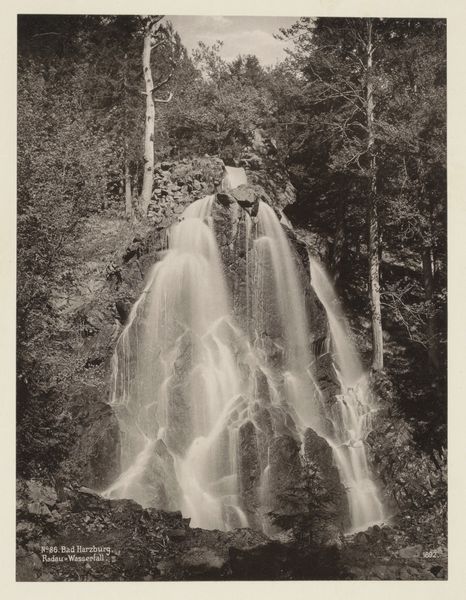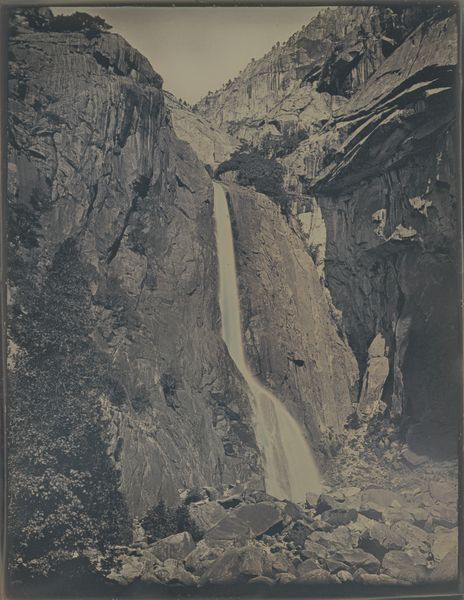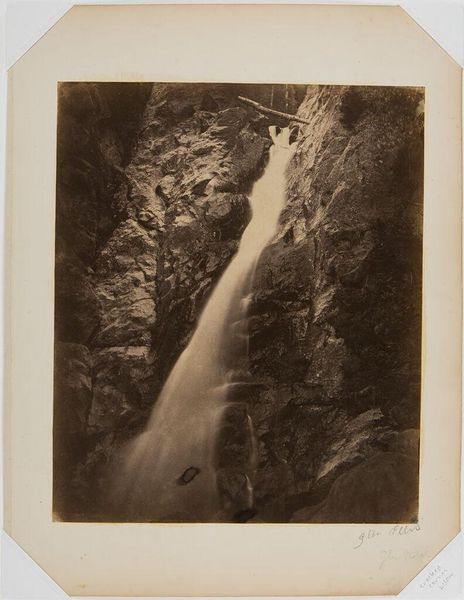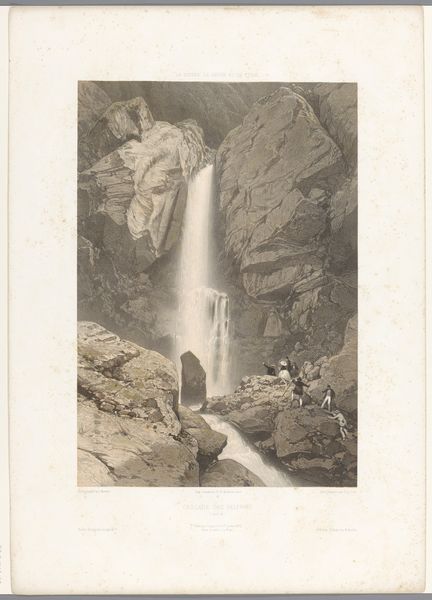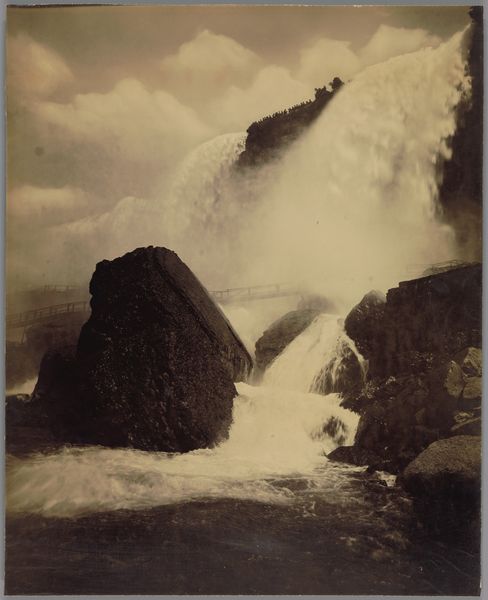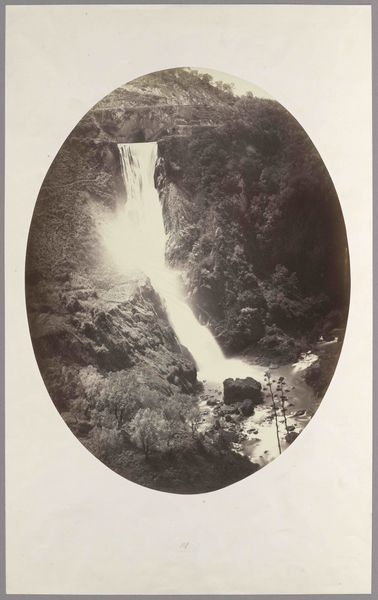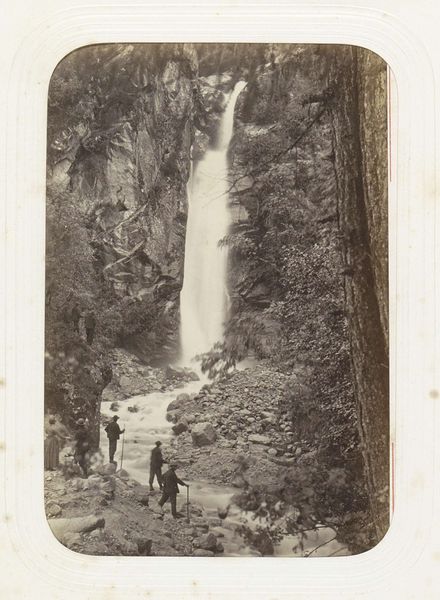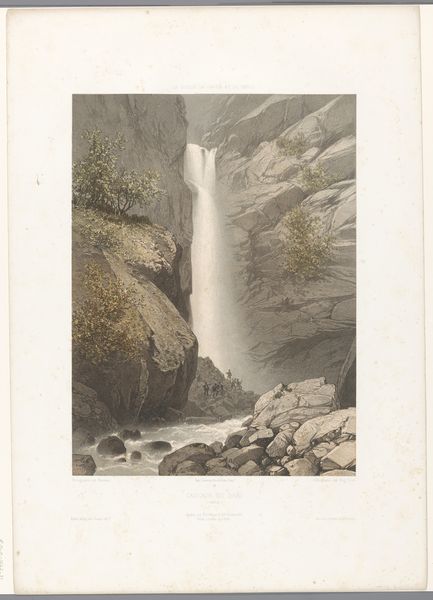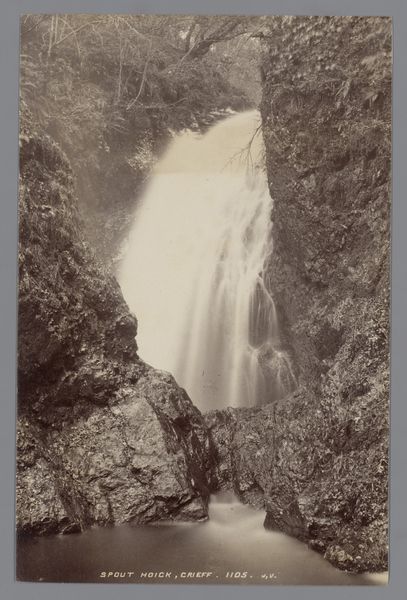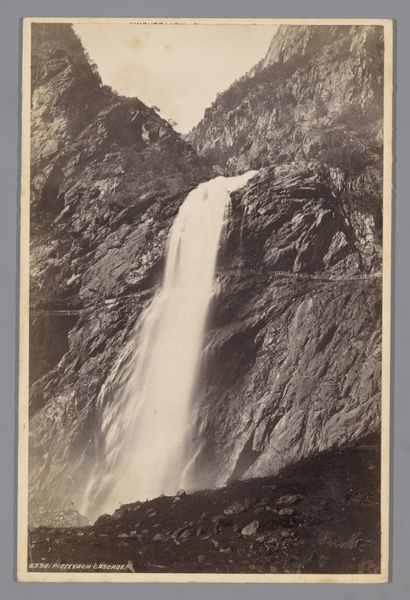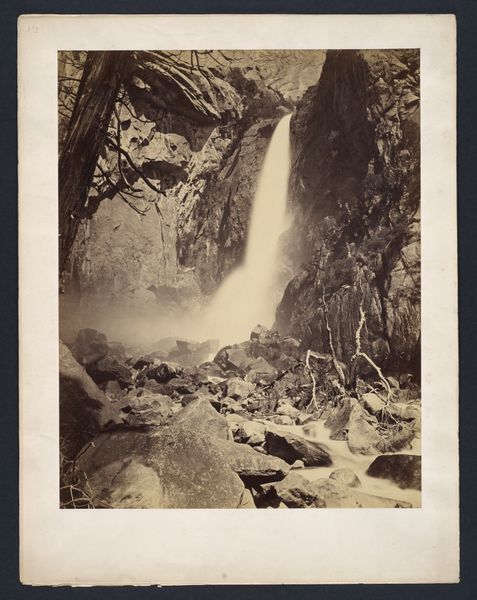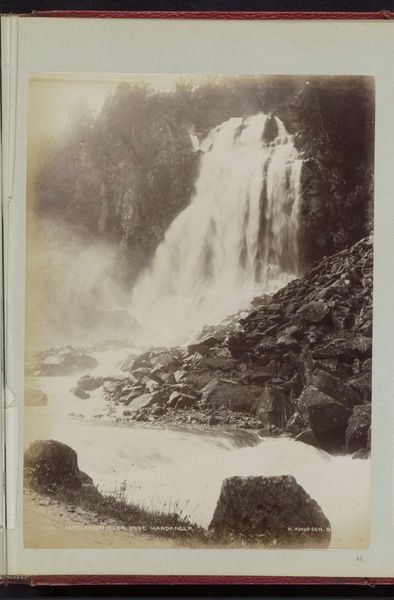
photography
#
landscape
#
waterfall
#
photography
#
orientalism
#
watercolor
Dimensions: height 260 mm, width 197 mm
Copyright: Rijks Museum: Open Domain
Curator: This albumen print, taken by Raimund von Stillfried between 1871 and 1885, presents the Hodo Waterfall near Nikko. Editor: There’s such a striking contrast between the softness of the cascading water and the sharp, almost jagged rocks framing it. And that solitary figure at the bottom just reinforces this sense of awe. Curator: Absolutely. And it’s precisely this juxtaposition that makes this image so captivating. Stillfried wasn't just capturing a landscape; he was carefully crafting a scene, manipulating the photographic process itself. The hand-coloring gives it a dreamlike quality, a kind of… ethereal romanticism that wasn't quite “real.” Editor: Yes, hand-coloring albumen prints like this was fascinating. It blurs the line between photography and painting, between mechanical reproduction and artisanal craft. Consider the labor invested in hand-tinting each print, transforming photography into a luxury commodity meant for global consumption. This was the dawn of photographic Orientalism. Curator: Exactly. We tend to view these early photographs through a nostalgic lens, but they were very much constructed images—intended to present a very specific, romanticized version of Japan to Western audiences. Notice, for example, how that figure is strategically placed to convey a sense of scale and grandeur, subtly imposing a Western gaze on the landscape. Editor: But doesn’t it also make us question the accessibility and ethics of such remote landscapes? Early photography equipment was very heavy, so just the sheer logistics behind this image are interesting. The environmental and labor impacts—not merely romantic escapism—ask for serious examination. Curator: I agree, acknowledging that historical baggage is crucial. Still, I can't help but get lost in the play of light and shadow, and the serene beauty he manages to capture despite those impositions. It reminds me of that feeling of standing before a massive force of nature, the thrill of being both humbled and energized by something so much bigger than myself. Editor: Well said. Thinking about the photograph’s place in history encourages us to view our natural environment more mindfully today, from every waterfall we capture with our smartphones. Curator: Precisely, an evocative artifact. Editor: Yes, a fusion of art, craft, and a lot of social reflection.
Comments
No comments
Be the first to comment and join the conversation on the ultimate creative platform.
